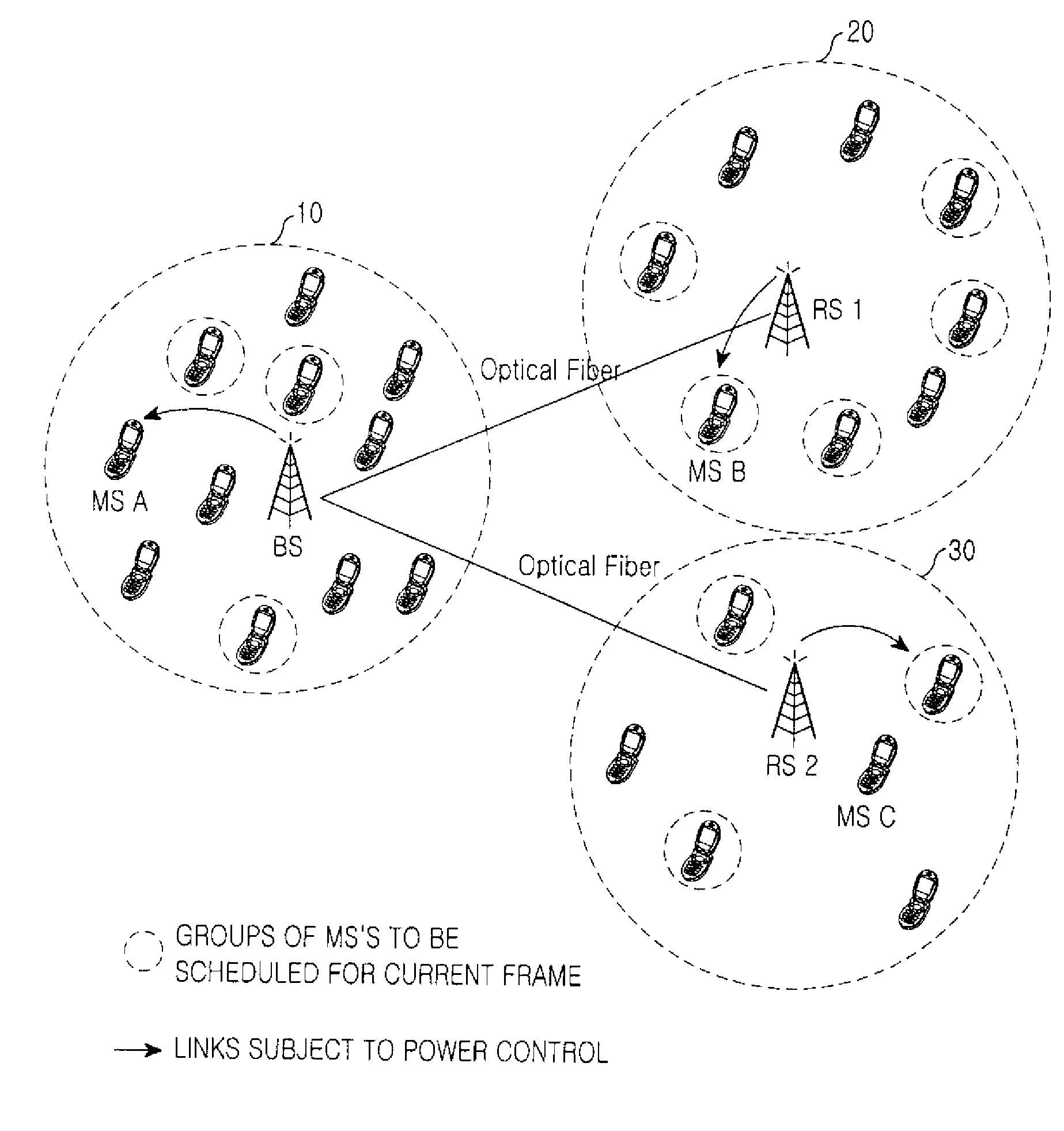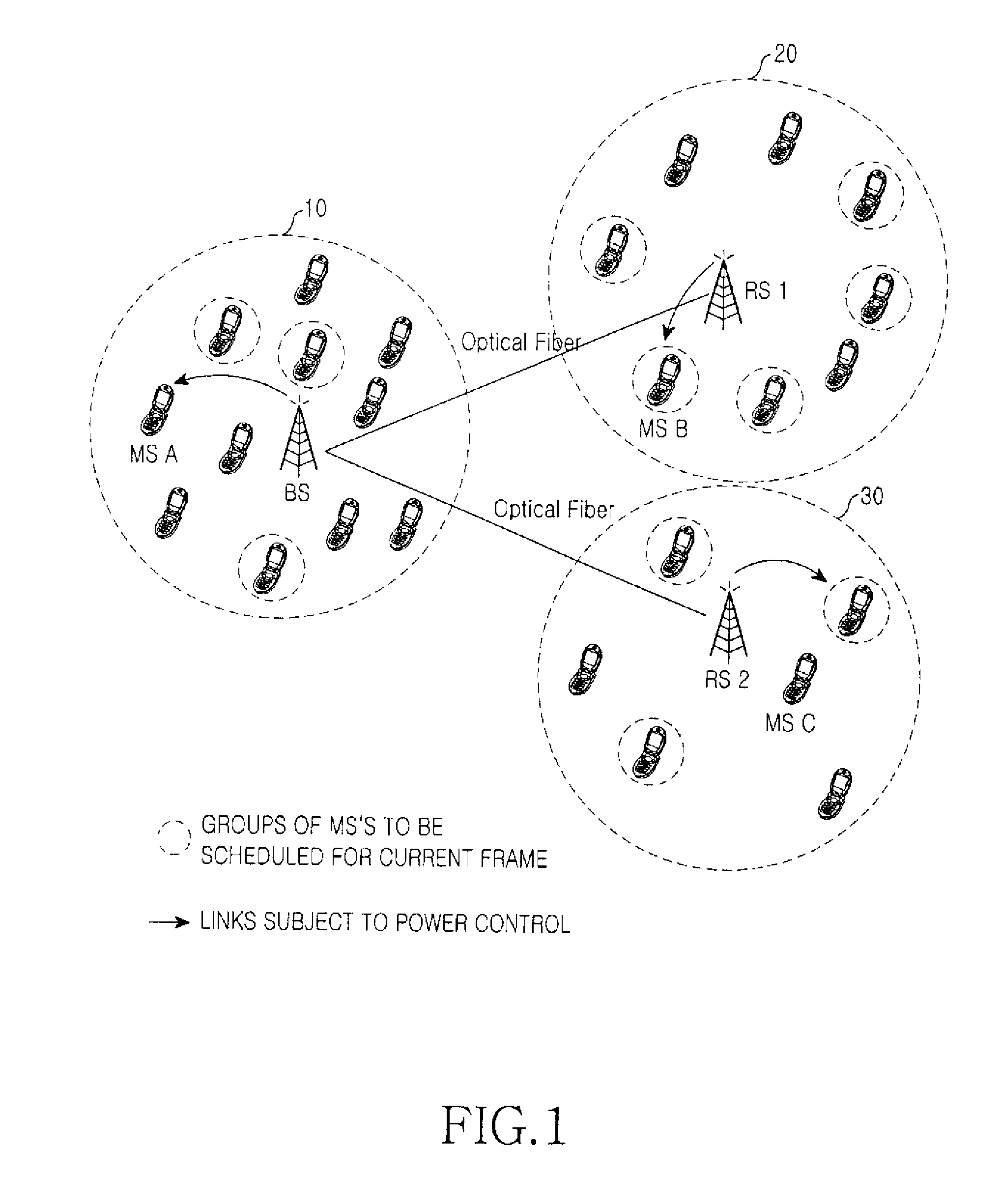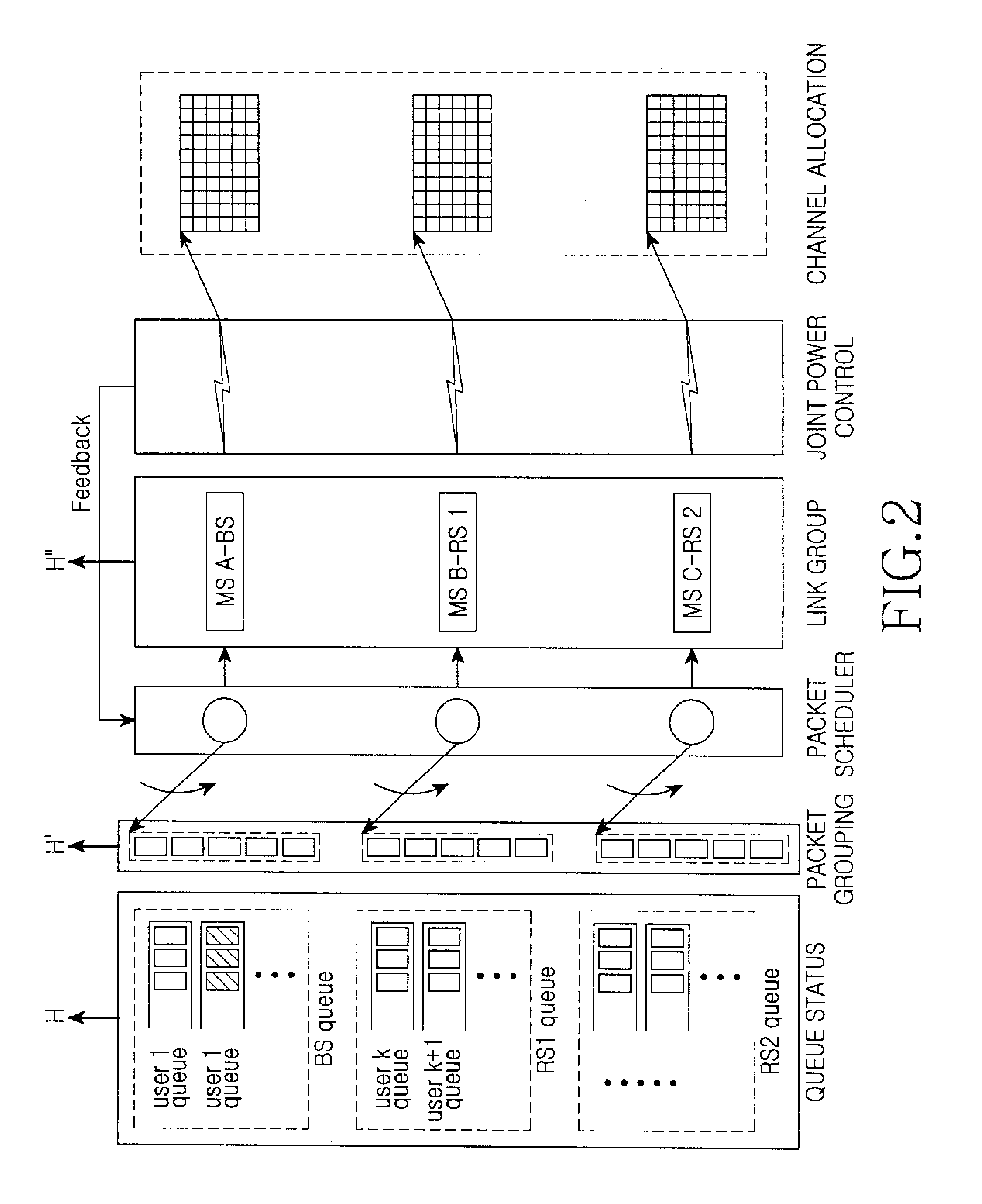Method and apparatus for joint scheduling to increase frequency efficiency and fairness in a distributed antenna system using frequency reuse and common power control
a distributed antenna system and frequency reuse technology, applied in power management, high-level techniques, wireless commuication services, etc., can solve the problems of packets to the mss, different signal attenuation and interference, different signal-to-interference and noise ratios (sinrs), etc., to reduce the probability of outage, maximize transmission efficiency, and facilitate interaction
- Summary
- Abstract
- Description
- Claims
- Application Information
AI Technical Summary
Benefits of technology
Problems solved by technology
Method used
Image
Examples
Embodiment Construction
[0016]The matters defined in the description such as a detailed construction and elements are provided to assist in a comprehensive understanding of exemplary embodiments of the invention. Accordingly, those of ordinary skill in the art will recognize that various changes and modifications of the embodiments described herein can be made without departing from the spirit of the invention of the scope of the appended claims. Also, descriptions of well-known functions and constructions may be omitted for clarity and conciseness so that a person of ordinary skill in the art can appreciate the exemplary descriptions of the present invention.
[0017]Throughout the drawings, the same drawing reference numerals will be understood to refer to the same elements, features and structures.
[0018]FIG. 1 illustrates an exemplary configuration of a cellular system using frequency reuse and distributed antennas, to which the present invention is applied. Referring to FIG. 1, a BS and RSs are positioned...
PUM
 Login to View More
Login to View More Abstract
Description
Claims
Application Information
 Login to View More
Login to View More - R&D
- Intellectual Property
- Life Sciences
- Materials
- Tech Scout
- Unparalleled Data Quality
- Higher Quality Content
- 60% Fewer Hallucinations
Browse by: Latest US Patents, China's latest patents, Technical Efficacy Thesaurus, Application Domain, Technology Topic, Popular Technical Reports.
© 2025 PatSnap. All rights reserved.Legal|Privacy policy|Modern Slavery Act Transparency Statement|Sitemap|About US| Contact US: help@patsnap.com



